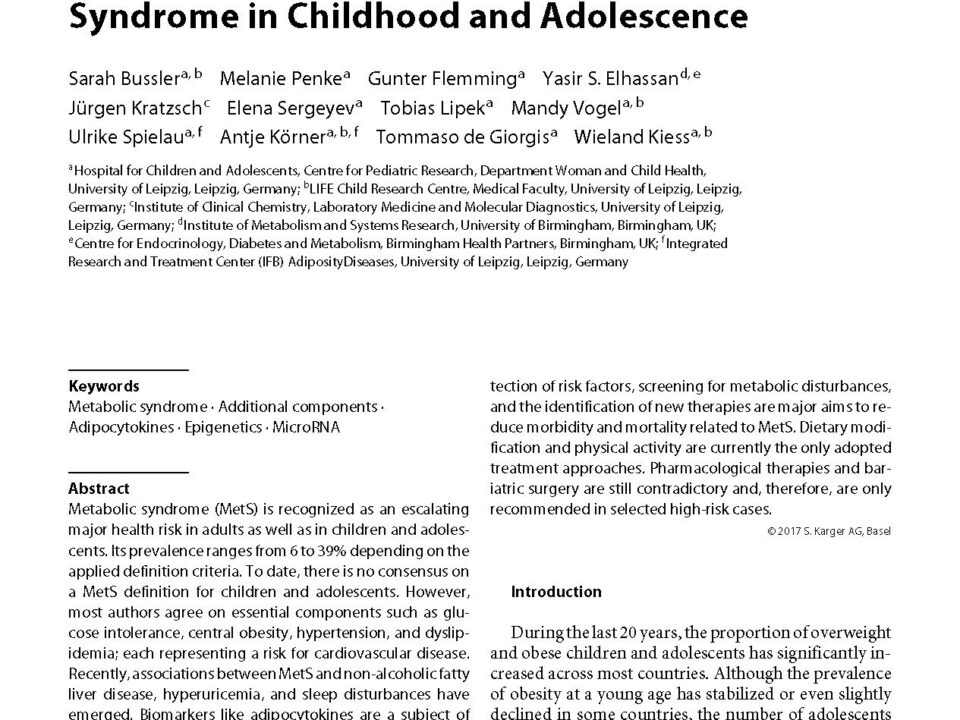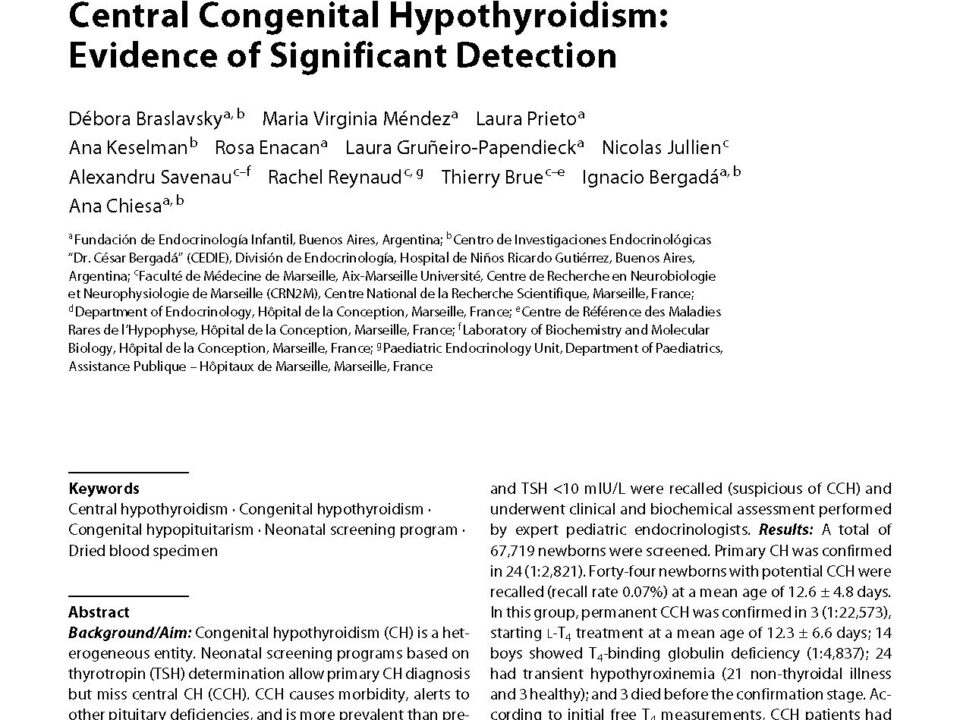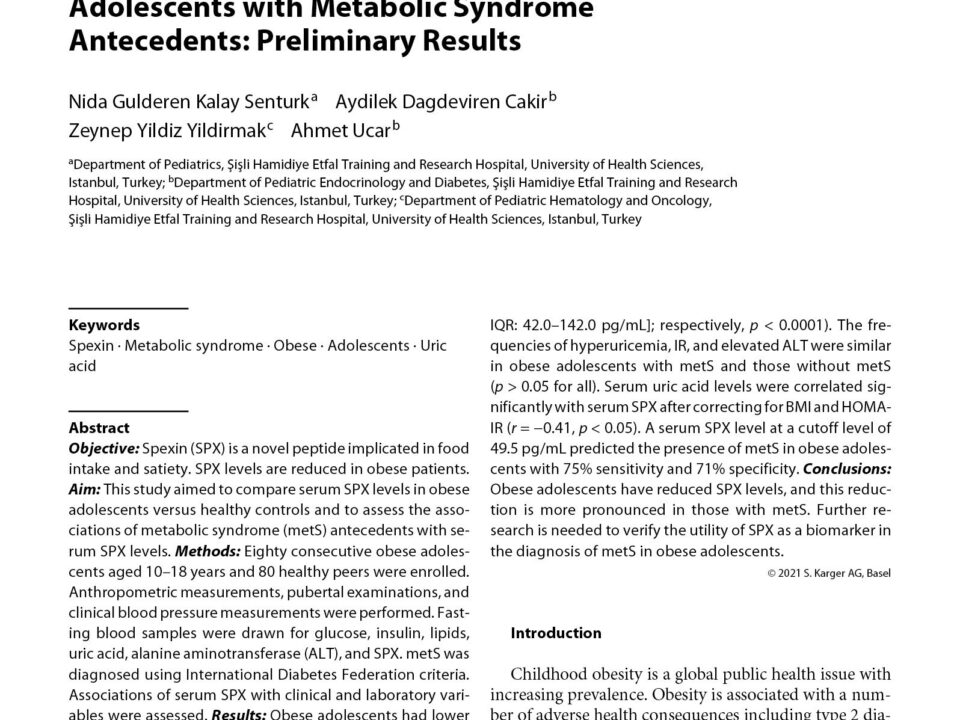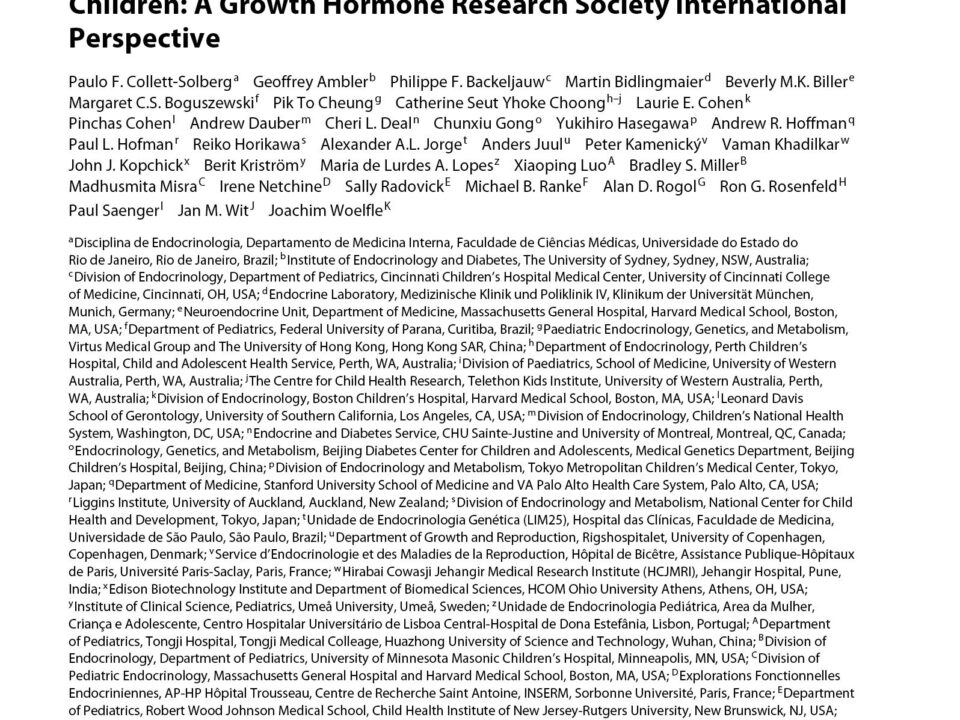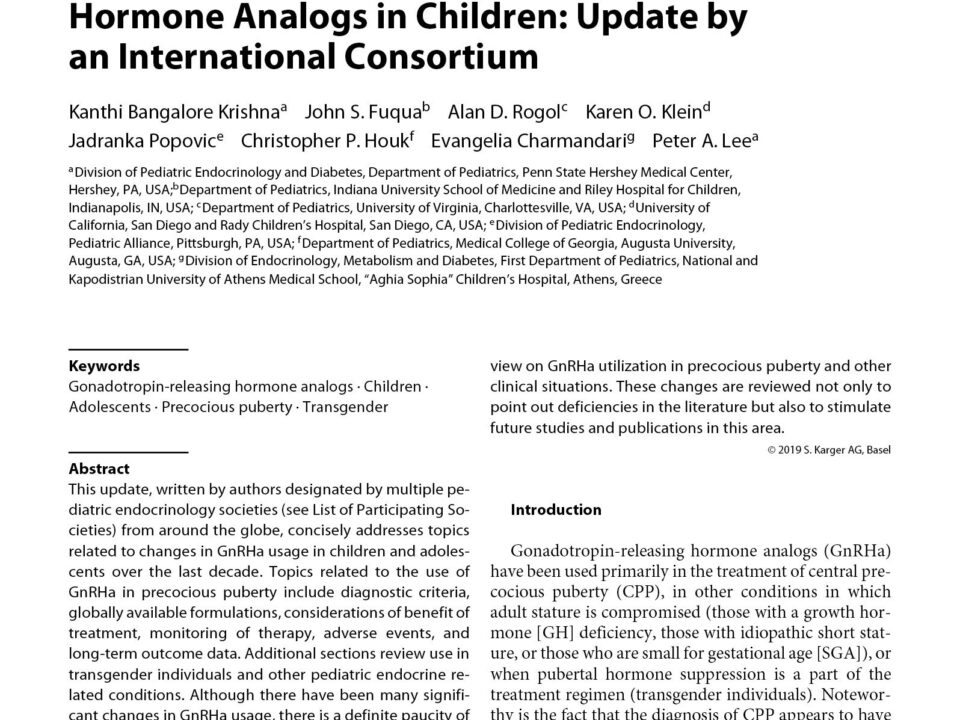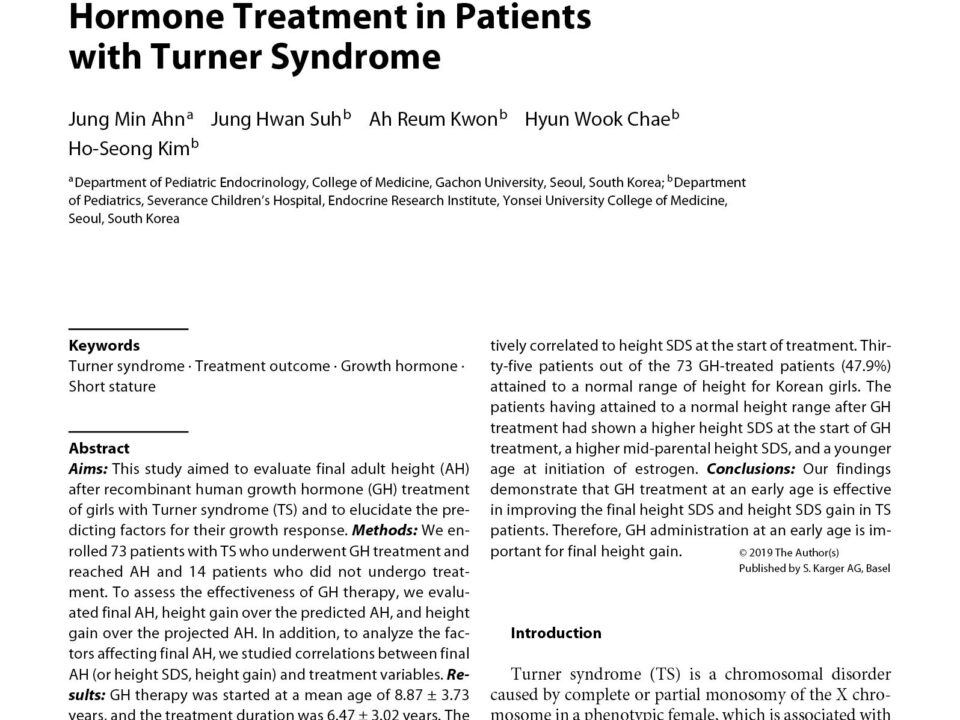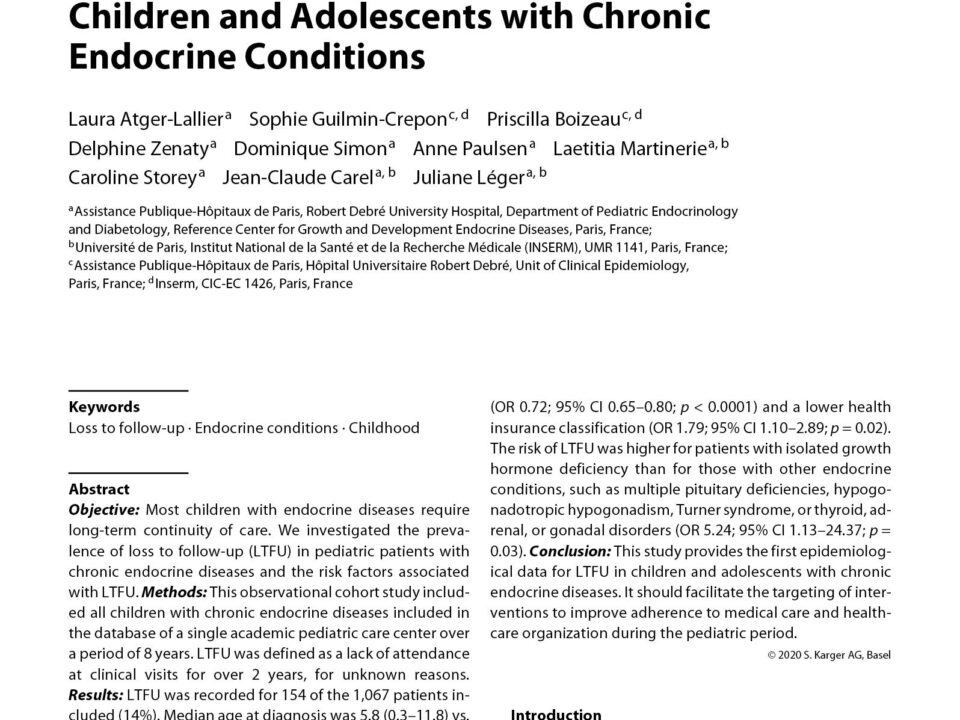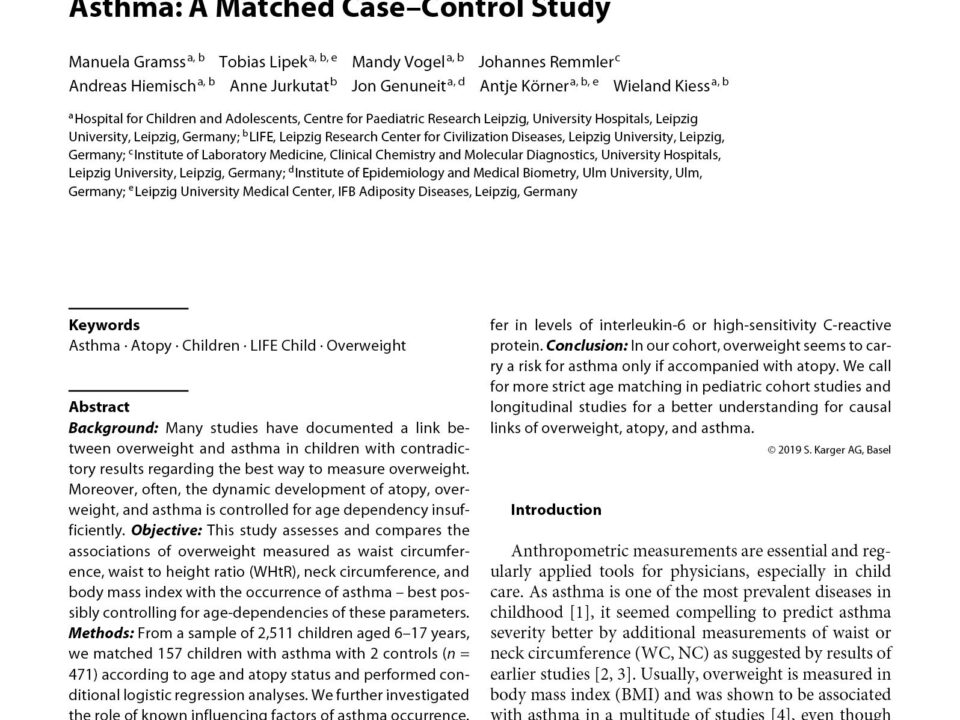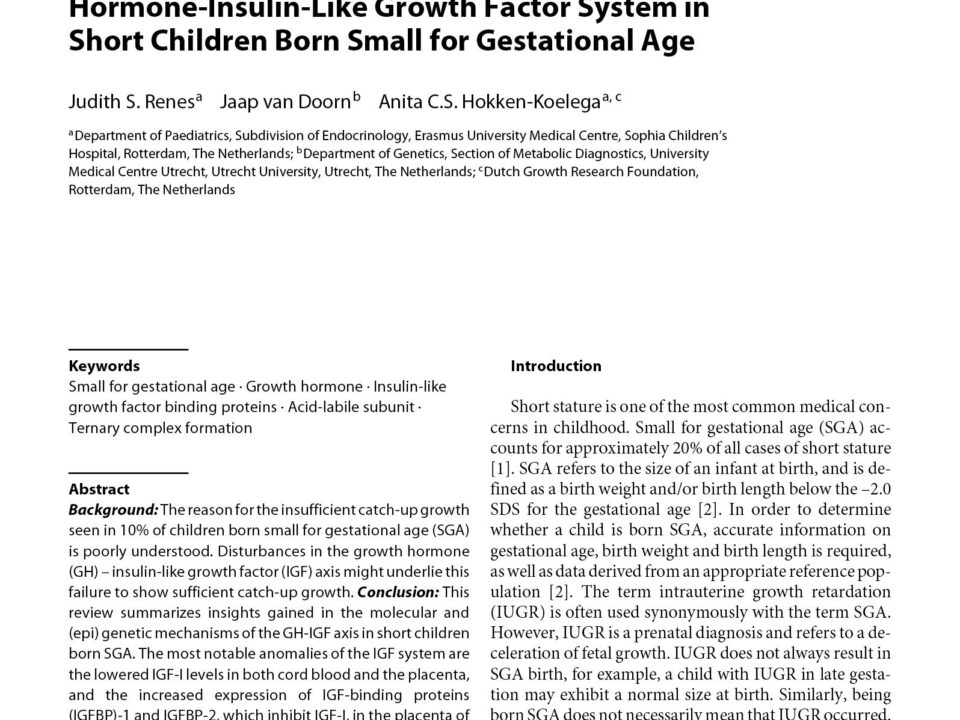December 13, 2022
Metabolic syndrome (MetS) is recognized as an escalating major health risk in adults as well as in children and adolescents. Its prevalence ranges from 6 to 39% depending on the applied definition criteria. To date, there is no consensus on a MetS definition for children and adolescents. However, most authors agree on essential components such as glucose intolerance, central obesity, hypertension, and dyslipidemia; each representing a risk for cardiovascular disease. Recently, associations between MetS and non-alcoholic fatty liver disease, hyperuricemia, and sleep disturbances have emerged. Biomarkers like adipocytokines are a subject of current research as they are implicated in the pathogenesis of the MetS. Epigenetics and gestational programming, especially the role of microRNA, comprise a novel, rapidly developing and promising research focus on the topic of MetS. MicroRNAs are increasingly valued for potential roles in the diagnosis, stratification, and therapeutics of MetS. Early detection of risk factors, screening for metabolic disturbances, and the identification of new therapies are major aims to reduce morbidity and mortality related to MetS. Dietary modification and physical activity are currently the only adopted treatment approaches. Pharmacological therapies and bariatric surgery are still contradictory and, therefore, are only recommended in selected high-risk cases.
December 13, 2022
Background/Aim: Congenital hypothyroidism (CH) is a heterogeneous entity. Neonatal screening programs based on thyrotropin (TSH) determination allow primary CH diagnosis but miss central CH (CCH). CCH causes morbidity, alerts to other pituitary deficiencies, and is more prevalent than previously thought. We aimed at developing a pilot neonatal screening program for CCH detection. Patients and Methods: A prospective 2-year pilot neonatal screening study based on simultaneous dried blood specimen TSH and thyroxine (T4) measurements was implemented in term newborns aged 2–7 days. Those with T4 ≤4.5 µg/dL (–2.3 SDS) and TSH <10 mIU/L were recalled (suspicious of CCH) and underwent clinical and biochemical assessment performed by expert pediatric endocrinologists. Results: A total of 67,719 newborns were screened. Primary CH was confirmed in 24 (1: 2,821). Forty-four newborns with potential CCH were recalled (recall rate 0.07%) at a mean age of 12.6 ± 4.8 days. In this group, permanent CCH was confirmed in 3 (1: 22,573), starting L-T4 treatment at a mean age of 12.3 ± 6.6 days; 14 boys showed T4-binding globulin deficiency (1: 4,837); 24 had transient hypothyroxinemia (21 non-thyroidal illness and 3 healthy); and 3 died before the confirmation stage. According to initial free T4 measurements, CCH patients had moderate hypothyroidism. Conclusions: Adding T4 to TSH measurements enabled the identification of CCH as a prevalent condition and contributed to improving the care of newborns with congenital hypopituitarism and recognizing other thyroidal disorders.
December 13, 2022
Objective: Spexin (SPX) is a novel peptide implicated in food intake and satiety. SPX levels are reduced in obese patients. Aim: This study aimed to compare serum SPX levels in obese adolescents versus healthy controls and to assess the associations of metabolic syndrome (metS) antecedents with serum SPX levels. Methods: Eighty consecutive obese adolescents aged 10–18 years and 80 healthy peers were enrolled. Anthropometric measurements, pubertal examinations, and clinical blood pressure measurements were performed. Fasting blood samples were drawn for glucose, insulin, lipids, uric acid, alanine aminotransferase (ALT), and SPX. metS was diagnosed using International Diabetes Federation criteria. Associations of serum SPX with clinical and laboratory variables were assessed. Results: Obese adolescents had lower serum SPX levels than healthy peers (50 pg/mL [25–75% IQR: 25–98 pg/mL] and 67.0 pg/mL [25–75% IQR: 32.5–126.0 pg/mL]; respectively, p = 0.035). Twenty (25%) obese adolescents were diagnosed as having metS. Obese adolescents with metS had lower SPX than those without metS (24.5 pg/mL [25–75% IQR: 15.3–49.5 pg/mL] and 69.0 pg/mL [25–75% IQR: 42.0–142.0 pg/mL]; respectively, p < 0.0001). The frequencies of hyperuricemia, IR, and elevated ALT were similar in obese adolescents with metS and those without metS (p > 0.05 for all). Serum uric acid levels were correlated significantly with serum SPX after correcting for BMI and HOMA-IR (r = −0.41, p < 0.05). A serum SPX level at a cutoff level of 49.5 pg/mL predicted the presence of metS in obese adolescents with 75% sensitivity and 71% specificity. Conclusions: Obese adolescents have reduced SPX levels, and this reduction is more pronounced in those with metS. Further research is needed to verify the utility of SPX as a biomarker in the diagnosis of metS in obese adolescents.
December 13, 2022
The Growth Hormone Research Society (GRS) convened a Workshop in March 2019 to evaluate the diagnosis and therapy of short stature in children. Forty-six international experts participated at the invitation of GRS including clinicians, basic scientists, and representatives from regulatory agencies and the pharmaceutical industry. Following plenary presentations addressing the current diagnosis and therapy of short stature in children, breakout groups discussed questions produced in advance by the planning committee and reconvened to share the group reports. A writing team assembled one document that was subsequently discussed and revised by participants. Participants from regulatory agencies and pharmaceutical companies were not part of the writing process. Short stature is the most common reason for referral to the pediatric endocrinologist. History, physical examination, and auxology remain the most important methods for understanding the reasons for the short stature. While some long-standing topics of controversy continue to generate debate, including in whom, and how, to perform and interpret growth hormone stimulation tests, new research areas are changing the clinical landscape, such as the genetics of short stature, selection of patients for genetic testing, and interpretation of genetic tests in the clinical setting. What dose of growth hormone to start, how to adjust the dose, and how to identify and manage a suboptimal response are still topics to debate. Additional areas that are expected to transform the growth field include the development of long-acting growth hormone preparations and other new therapeutics and diagnostics that may increase adult height or aid in the diagnosis of growth hormone deficiency.
December 13, 2022
This update, written by authors designated by multiple pediatric endocrinology societies (see List of Participating Societies) from around the globe, concisely addresses topics related to changes in GnRHa usage in children and adolescents over the last decade. Topics related to the use of GnRHa in precocious puberty include diagnostic criteria, globally available formulations, considerations of benefit of treatment, monitoring of therapy, adverse events, and long-term outcome data. Additional sections review use in transgender individuals and other pediatric endocrine related conditions. Although there have been many significant changes in GnRHa usage, there is a definite paucity of evidence-based publications to support them. Therefore, this paper is explicitly not intended to evaluate what is recommended in terms of the best use of GnRHa, based on evidence and expert opinion, but rather to describe how these drugs are used, irrespective of any qualitative evaluation. Thus, this paper should be considered a narrative review on GnRHa utilization in precocious puberty and other clinical situations. These changes are reviewed not only to point out deficiencies in the literature but also to stimulate future studies and publications in this area.
December 13, 2022
Aims: This study aimed to evaluate final adult height (AH) after recombinant human growth hormone (GH) treatment of girls with Turner syndrome (TS) and to elucidate the predicting factors for their growth response. Methods: We enrolled 73 patients with TS who underwent GH treatment and reached AH and 14 patients who did not undergo treatment. To assess the effectiveness of GH therapy, we evaluated final AH, height gain over the predicted AH, and height gain over the projected AH. In addition, to analyze the factors affecting final AH, we studied correlations between final AH (or height SDS, height gain) and treatment variables. Results: GH therapy was started at a mean age of 8.87 ± 3.73 years, and the treatment duration was 6.47 ± 3.02 years. The patients in the treated group reached a final AH of 152.03 ± 4.66 cm (final AH SDS for the general population: –1.93 ± 1.03) with a gain over projected AH at the start of treatment of 12.21 ± 4.33 cm. The untreated control subjects had a final AH of 143.57 ± 4.06 cm with a gain over projected AH at the first visit of 3.89 ± 3.80 cm. Final AH and AH SDS were positively correlated to height SDS at the start of treatment. Thirty-five patients out of the 73 GH-treated patients (47.9%) attained to a normal range of height for Korean girls. The patients having attained to a normal height range after GH treatment had shown a higher height SDS at the start of GH treatment, a higher mid-parental height SDS, and a younger age at initiation of estrogen. Conclusions: Our findings demonstrate that GH treatment at an early age is effective in improving the final height SDS and height SDS gain in TS patients. Therefore, GH administration at an early age is important for final height gain.
December 13, 2022
Objective: Most children with endocrine diseases require long-term continuity of care. We investigated the prevalence of loss to follow-up (LTFU) in pediatric patients with chronic endocrine diseases and the risk factors associated with LTFU. Methods: This observational cohort study included all children with chronic endocrine diseases included in the database of a single academic pediatric care center over a period of 8 years. LTFU was defined as a lack of attendance at clinical visits for over 2 years, for unknown reasons. Results: LTFU was recorded for 154 of the 1,067 patients included (14%). Median age at diagnosis was 5.8 (0.3–11.8) vs. 1.2 (0.0–6.9) years, and age at last visit was 14.1 (9.7–16.1) vs. 11.7 (6.1–15.8) years, for the LTFU and no-LTFU groups, respectively. In multivariate analysis, the risk of LTFU increased with age at diagnosis (OR 1.18; 95% CI 1.12–1.24) and was higher for patients diagnosed before 2006 (vs. after 2006; OR 4.80; 95% CI 3.00–7.66), with fewer visits in the last 3 years (OR 0.72; 95% CI 0.65–0.80; p < 0.0001) and a lower health insurance classification (OR 1.79; 95% CI 1.10–2.89; p = 0.02). The risk of LTFU was higher for patients with isolated growth hormone deficiency than for those with other endocrine conditions, such as multiple pituitary deficiencies, hypogonadotropic hypogonadism, Turner syndrome, or thyroid, adrenal, or gonadal disorders (OR 5.24; 95% CI 1.13–24.37; p = 0.03). Conclusion: This study provides the first epidemiological data for LTFU in children and adolescents with chronic endocrine diseases. It should facilitate the targeting of interventions to improve adherence to medical care and healthcare organization during the pediatric period.
December 13, 2022
Background: Many studies have documented a link between overweight and asthma in children with contradictory results regarding the best way to measure overweight. Moreover, often, the dynamic development of atopy, overweight, and asthma is controlled for age dependency insufficiently. Objective: This study assesses and compares the associations of overweight measured as waist circumference, waist to height ratio (WHtR), neck circumference, and body mass index with the occurrence of asthma – best possibly controlling for age-dependencies of these parameters. Methods: From a sample of 2,511 children aged 6–17 years, we matched 157 children with asthma with 2 controls (n = 471) according to age and atopy status and performed conditional logistic regression analyses. We further investigated the role of known influencing factors of asthma occurrence. Results: In children with atopy, all overweight proxies were consistently positively associated with asthma. Statistical significance was reached for WHtR-SD score (OR 1.26, 95% CI 1.03–1.54, p = 0.025) and persisted when further covariates, such as birth weight or social status, were added to the model. Groups of atopic versus nonatopic participants do not differ in levels of interleukin-6 or high-sensitivity C-reactive protein. Conclusion: In our cohort, overweight seems to carry a risk for asthma only if accompanied with atopy. We call for more strict age matching in pediatric cohort studies and longitudinal studies for a better understanding for causal links of overweight, atopy, and asthma.
December 13, 2022
Background: The reason for the insufficient catch-up growth seen in 10% of children born small for gestational age (SGA) is poorly understood. Disturbances in the growth hormone (GH) – insulin-like growth factor (IGF) axis might underlie this failure to show sufficient catch-up growth. Conclusion: This review summarizes insights gained in the molecular and (epi) genetic mechanisms of the GH-IGF axis in short children born SGA. The most notable anomalies of the IGF system are the lowered IGF-I levels in both cord blood and the placenta, and the increased expression of IGF-binding proteins (IGFBP)-1 and IGFBP-2, which inhibit IGF-I, in the placenta of SGA neonates. These observations suggest a decreased bioactivity of IGF-I in utero. IGF-I levels remain reduced in SGA children with short stature, as well as IGFBP-3 and acid-labile subunit levels. Proteolysis of IGFBP-3 appears to be increased.
